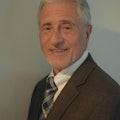Barry on Batteries: Understand Direct Lithium Extraction From Geothermal Brine
There are many ways to approach lithium production. Previously, I wrote about the bulk or initial solid-liquids separation technologies of pusher centrifuges or vacuum belt filters (See: “Barry On Batteries: Lithium Brine Extraction Requires Flexible Technology”). Now, let’s turn our attention to direct lithium extraction (DLE) from geothermal brine. A newer approach, DLE is a very sustainable method and typically includes pretreatment steps to prepare brine for lithium extraction, the lithium extraction process itself and then the post-treatment to remove impurities.
Geothermal water is the product of water-rock interactions over a long time at a high temperature and depth. DLE from geothermal brine flows the brine through a lithium-bonding material using several available DLE processes:
• Adsorption: Physically adsorbs lithium chloride (LiCl) molecules onto the surface of a sorbent from a lithium-loaded solution with water as a stripping solution.
• Ion exchange: Takes lithium ions from the solution by trading them for protons or other cations within the sorbent’s structure. An acid solution is typically required for stripping and recovering the lithium.
• Solvent extraction: Exchanges LiCl molecules or lithium ions between brine and an organic liquid phase containing an extractant that complexes with lithium or lithium compounds in the brine.
These processes are followed by purification process to obtain lithium carbonate or lithium hydroxide.
The Place for Chemical Processing
The chemical process industry (CPI) needs to lead the way in this market segment. To prepare the brine for lithium extraction, there are several possibilities for pressure filtration as alternatives to centrifugation or vacuum filtration.
One choice is a filter press with its various design options such as fully-enclosed for operator safety and no solvent emissions. In general terms, filter press technology consists of a plate stack that forms a series of chambers. Each plate is covered with a filter cloth with plate-to-plate sealing. The slurry is pumped into the plate chambers, uniformly filling with solids, while the filtrate is collected via a piping manifold. The solids continue to fill the plate chambers until they are completely full of saturated filter cake. Cake washing follows, either counter-current or co-current, followed by dewatering and drying by gas blowing and/or membrane squeezing. When the process cycle is completed, the plate stack opens, and the cake is discharged.
A second alternative is a tower press. A tower press is a vertical design where the mechanical structure used to support the filter consists of two columns, an upper and lower support beam and two base beams. The filter plates and hydraulic cylinders are within the support structure. The hydraulic cylinders open and close the filter plates keeping them closed when the filtration process is in progress and opening during discharge. Each filter plate has an upper and lower chamber with two layers of filter belt between the chambers. The filter media can be a single and continuous cloth design or installed on each individual plate.
Meeting Challenges of Brines and Geothermal Waters
Brines and geothermal waters have variable slurry characteristics simply by the nature that these feeds are naturally occurring. The filter press and tower press technologies can handle slurry solids concentrations up to 65% and can operate at pressures up to 250 psig so there is a wide operating process range. Cake thickness can also be varied based on the particle size and shape. Cake washing and dewatering/drying are also conducted on these units, with the tower press typically more efficient for each step. As these are both batch process technologies, the solids are held in place by the filter plates, which allow for varying process times for optimization.
Finally, in terms of the downstream DLE process extraction, filtrate quality is critical to the operation. Filter media selection and cake building can result in removal efficiency in the 1- to 5-micron range allowing the tower press and filter press to operate without polishing filters.
How do you select the appropriate technology of pressure, vacuum or centrifugation? The answer, as always, is lab testing. Data collection will be your basis for decision-making.
About the Author
Barry Perlmutter
President of Perlmutter & Idea Development (P&ID) LLC
Barry Perlmutter is president of Perlmutter & Idea Development (P&ID) LLC. He has over 40 years of science, engineering and business marketing experience in the field of solid-liquid separation including filtration, centrifugation, process drying, mixing and recycling. His strong professional skills focus on process and project solutions, innovation strategies and execution, market expansion and business development. Barry has published and presented worldwide on applications in the chemical, pharmaceutical, and energy/environmental industries and has been responsible for introducing many European technologies into the Americas marketplace. His two books, published by Elsevier, Amsterdam, "Handbook of Solid-Liquid Filtration" and "Integration & Optimization of Unit Operations" are used worldwide for process guidance.

